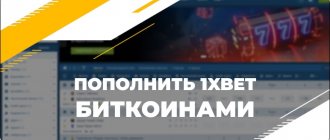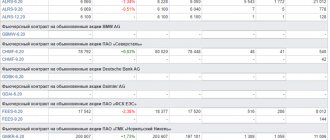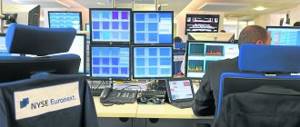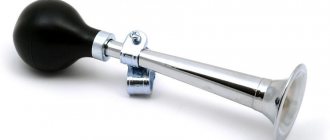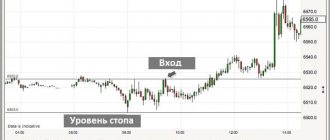For a Russian private investor, knowing the working hours of the Moscow Exchange is mandatory. Of course, those who have chosen investment options directly related to exchange trading cannot do without such information, but for others, news from the Moscow Exchange platforms and events during trading sessions are very important, since they can and do have a serious impact on all sectors of the economy and the country's financial sector.
History of the creation of the MICEX
The first exchange was founded in St. Petersburg in 1703. It appeared in Moscow in 1839, and in 1992 the MICEX opened. Already in July 1993, the first currency trading began.
Every year the company adds new opportunities for customers.
The Russian Trading System (PTC) began operations in 1995. Every year the company grew and increased the range of its services. The Moscow Exchange began its activities in 2011, when PTC and MICEX merged into a single company. The purpose of the merger was the desire to optimize the Moscow Exchange.
Results
If you decide to make money using the exchange, you have two main models of behavior:
- trade independently;
- pay a professional to trade for you.
Both methods have their pros and cons. If you decide to trade on your own, you can try to master the exchange without outside help, or you can sign up for a training course. This way you will save time and money.
To be successful in trading, you need to choose one strategy and stick to it. Slowness and focus on results are two important qualities. Hasty trades, even if they bring a profit, will be much less than what you could count on with calmer trading. I hope this article helped you form an understanding of the basics of being a trader; share it on social networks with your friends.
Operating principles of the Moscow Exchange
On the Moscow Exchange, currencies, mutual funds, precious metals, options, futures and other assets are traded. Most of the work of the MICEX takes place in the data center, where the most powerful equipment is installed; all completed transactions are stored in a database. Particular emphasis is placed on security, because every leak of personal information is a strong blow to user confidence in the Moscow Exchange and to the financial component.
CCP and leverage
The CC (Central Counterparty) is the liaison between the buyer and the seller, who guarantees the security of both parties. Its main function is to take all the risks of the transaction upon itself. For sellers, the Central Committee is the buyer, and for buyers, it is the seller. If a problem arises during the transaction, then everything will be resolved by the central counterparty. At this time, you may not even notice the problems and your transaction will proceed without changes.
Leverage is a service provided by brokers that gives the trader money to carry out trading operations, which he is obliged to pay back after completing all transactions. The size of the loan depends on the trader’s deposit: it can be multiplied by the broker by 5, 10, 25, 50, 100 times or more. Making transactions using a loan is called margin trading.
How is the bidding going?
There are several main markets on the MICEX, each of which has its own operating schedule:
- The stock market is the base platform where you can purchase foreign or Russian assets. This exchange is available to both residents of the Russian Federation and representatives of other countries. Bidding starts at 10:00 and continues until 18:40.
- The derivatives market is a secondary platform that is in demand among traders. On it you can purchase options, contracts and futures on the US dollar and the RTS index. Investments in the derivatives market have increased risks and income.
- The foreign exchange market is one of the oldest exchange markets. Daily turnover is 1 trillion rubles. Swiss francs, US dollars, pounds sterling, euros, Chinese yuan and Hong Kong dollars are traded in various delivery modes.
About trade orders
Depending on the experience of the site user, you can select a suitable application.
There are 3 different types of orders on the trading platform, each of which has its own advantages and disadvantages:
- Limit. This is the most popular type of application. When selling, the price is inflated, and when buying, it is underestimated compared to the market price. Most scalpers use only limit orders, because... others do not bring such results.
- Market. The simplest and riskiest, regardless of your investing skills. This order acquires a share of risk due to the inaccuracy of the asset price, because it changes several times per second. The great thing is that your purchase or sale is instant.
- Stop loss. Similar to a limit order. It involves concluding a transaction not with the expectation of a price rollback, but upon reaching a predetermined price. If the price is near the resistance level, then it is difficult for the trader to break through this level and he places an order a little higher, thereby breaking through it. He can also break through the bottom by placing his bid a little lower. If the price breaks the specified level, the order will be activated and the trader will be in a short position on this financial instrument.
Auctions and bidding stops
It happens that everything goes smoothly on the stock exchange, but there are also strong peaks and drops. To avoid surges, the MICEX can turn on the discrete auction mode (only if the price changes by 20% within 10 minutes). Then trading is disabled for 30 minutes.
At this time, the auction begins to collect purchase/sale applications; only limit applications are accepted. As a result, demand and a new price begin to re-form. During the day, such a stop can occur only 2 times, the 3rd time the exchange closes before the end of the day.
Central counterparty of the Central Committee
An important characteristic of an exchange is the presence of a central counterparty. In the Moscow Exchange group, its role is played by the National Clearing Center. Among its main tasks are ensuring the security of the transaction and performing the technical side of the issue.
Thus, for the seller and the buyer, the transaction is completed in one click. The Central Committee carries out numerous operations to purchase an asset, make a payment, transfer the asset to the buyer, and receive the cash equivalent.
2021 trading calendar
In the calendar it is convenient to see the opening hours of the markets you are interested in using filters.
The MICEX decided to add additional trading days on May 10 and June 14 due to the cancellation of its work during the holidays. That is, on the currency and precious metals markets, as well as on the stock, derivatives and money markets, TOW, T+ and CC trading will take place on pre- and post-holiday days - February 22, May 10, June 14 and November 5.
February 23, March 8, May 3, November 4 The Moscow Exchange is closed due to holidays. On February 20, trading will take place with special restrictions.
Common mistakes of new traders
Beginners often make the same mistakes:
- illiterate counter-trend trading. I remind you once again - I do not recommend trading against the trend for beginners! Before you trade against trends, learn how to trade with them. A novice trader may have problems determining the appropriate entry point. You can learn this only in practice, after first studying the theoretical basis;
- emotional trading. If a strategy doesn't immediately generate the returns you're hoping for, you may find yourself trading more erratically. Nothing good will come of this. Traders call a depressed state after a series of mistakes “tilt” and recommend leaving the exchange for several minutes or hours until your peace of mind returns;
- early profit taking. If the purchased shares begin to rise in price, the novice trader has a desire to sell them as quickly as possible. But usually there is no need to rush - you need to wait, because the upward price movement may continue, and then you will earn much more;
- graphs of the same scale. When analyzing the market, it is important to see not only the specific situation (for example, price fluctuations over the last month), but also a more general one - for six months and a year. Look at the charts at different scales - this will help you distinguish between the main and corrective trends.
Market sections and opening times
Before investing, you should study all the funds that are part of the Moscow Exchange index, so as not to encounter problems in the future.
Stock market
On the stock market they trade stocks, federal loan bonds, euro and simple bonds, mutual funds and other securities. Payments are made 2 days after purchase.
The work schedule has recently changed, and now instead of 09:30-18:45 it is 09:30-23:50. At this time, only securities of Russian issuers are traded on the stock exchange.
Main market
Detailed operating hours are presented on the exchange website.
On the main market, stocks, shares and depositary receipts are traded. This market is open from 10:00 to 18:45. There is additional time when only Russian issuers trade. The additional session lasts from 19:00 to 23:50.
Standard
In “Standard” the set of assets is somewhat different. It includes shares, options, futures and units that were issued by Russian or foreign companies. Hours in this sector are from 10:00 to 18:45.
Classic
The classic sector is distinguished by the fact that trading can be carried out in several currencies (this function is not available in the “Standard” or on the main market). Another feature is that people can determine their own trading days, but this sector operates from 10:00 to 18:45.
Useful materials for participants
It’s never too late to develop, and the recordings of webinars and courses posted on school.moex.com once again prove this. The organizers themselves clarify that they will help you understand investments from scratch, which is especially important if you have had no experience in investing before, and the Nasdaq index sounds like something associated with a cartoon character.
For participants in each section there is a detailed description of products, risks, and work technology. A feedback form is also provided. There is a lot of information, it is quite complete, and the site itself, although rich, is intuitive. There is a separate section “Library”, which contains distribution kits and important information.
How does the MICEX derivatives market work?
The derivatives market sells contracts that have an expiration date. Once a contract is concluded, it can be either fulfilled or terminated. It can be stocks, bonds, indices, options and futures. Contract volumes are larger than standard assets. The second name for the derivatives market is FORTS.
Advantages of FORTS:
- lack of transaction costs that exist in the stock market, such as short fees and the use of leverage;
- leverage effect built into derivatives;
- high volatility;
- reduced transaction commission.
Partial provision
The term partial collateral on the exchange usually means the use of leverage. For example, if an investor does not have enough funds to purchase shares (or another asset), the exchange may issue the missing portion. However, by using such a service, the investor agrees to comply with the rules. Thus, if there is a risk of losing the credit amount, the exchange may take back the shares.
The main thing to remember is that high leverage allows you to increase your deposit faster, but losing money also happens faster.
Trading on the foreign exchange market
When purchasing funds from represented states, you must remember the time at which the auction is held.
At the moment of a strong jump in the currency, the attention of investors switches to the foreign exchange market, and some think about buying currency. The currency exchange is divided into 2 types: TOD (short for today) and TOM (short for tomorrow).
In this market you can buy:
- Swiss francs;
- US dollars;
- Euro;
- Chinese yuan;
- Hong Kong dollars.
All transactions take place in relation to the ruble.
The TOM delivery mode has a more clear work schedule: for all currencies from 10:00 to 23:50. And TOD has its own for each currency (Moscow time is used):
- US dollars - from 10:00 to 17:15;
- euros, pounds sterling, Swiss francs - from 10:00 to 15:15;
- Chinese yuan and Hong Kong dollars - from 10:00 to 10:45.
Preparing to trade on the Moscow Exchange - how to register and start trading
Before you register and start trading on MOEX, you need to carefully prepare.
It is important to follow several steps:
- find a broker that meets the requirements;
- create a demo account on the site;
- open an account to start trading.
Search for a broker
A company that acts as an intermediary and allows trading on the Moscow Exchange is called a broker.
When choosing such a company, you should consider a number of indicators:
- availability of the right to conduct such activities;
- presence of a company office in the region where the trader is located (this is important if the investor plans to attend seminars);
- tariffs (even a difference of hundredths of a percent for large amounts will matter).
Create a demo account
Before you start trading, you should understand in detail the intricacies of working at MOEX. A demo account will help you do this. To open it, you must install specialized software. This could be TRANSAQ, Tradematic Trader, Netinvestor or Quik. Some brokers have their own programs.
Thanks to a demo account, the investor will receive the necessary skills to work with the exchange and will not risk his money.
How to open a trading account
To be able to open an account, you must enter into an agreement with a broker. Service is possible only on the basis of this document.
You can sign the agreement in 2 ways:
- Visit to the broker's office. During the meeting, the client confirms his identity with documents.
- You can do without going to the company. To register on the stock exchange, the necessary documents are collected, copies are made and certified by a notary. These papers are sent by mail or courier service.
After concluding an agreement, the client receives access to his personal account and an electronic key, which is necessary to confirm transactions on the trading platform.
Trading times for different world exchanges
It must be taken into account that the duration of work varies from company to company.
Each world exchange has its own operating schedule, which changes when switching to winter and summer time. Previously, Russia also switched to them, but this continued until 2011. Japan and China have the same situation, but Europe and the USA decided not to cancel summer and winter time. The first is +1 hour to local time, and the second is 1 hour. The tables indicate Moscow time.
Europe
Europe begins switching to summer time on the last Sunday in March, and to winter time on the last Sunday in October.
| Winter time | Summer time | Duration of work | ||
| Opening | Closing | Opening | Closing | |
| 11:00 | 19:30 | 10:00 | 18:30 | 8 hours 30 minutes |
America
In the United States, the transition from daylight saving time to winter time begins in November (on the first Sunday), and from winter to summer time in March (on the second Sunday).
| Winter time | Summer time | Duration of work | ||
| Opening | Closing | Opening | Closing | |
| 17:30 | 00:00 | 16:30 | 01:00 | 6 hours 30 minutes |
Asian section
The Asian section and the Pacific block recently stopped switching to winter and summer time.
| Winter time | Summer time | Duration of work | ||
| Opening | Closing | Opening | Closing | |
| 05:00 | 11:00 | 04:00 | 10:00 | 6 hours |
Investor's Dictionary
In conclusion, it is worth paying attention to several terms that are used on the MICEX more often than others.
Central counterparty. This definition means an intermediary who is the link between the seller and the buyer. Among its main tasks is ensuring the security of the transaction.
Partial provision. This is a situation in which the exchange issues a loan to the buyer when there is not enough money in his account.
The order book is a conditional place in Moscow Exchange PJSC, in which the best orders submitted for sale and purchase are collected.
Delayed execution. This is a process in which the purchased stock assets are available to the buyer within 2 days. Then the payment is made.


